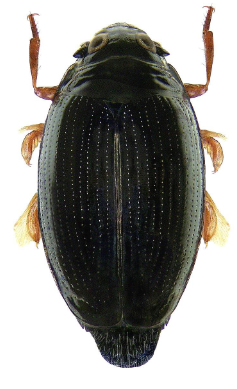L5 Detecting impacts using biological indicators invertebrate adaptions
1/39
There's no tags or description
Looks like no tags are added yet.
Name | Mastery | Learn | Test | Matching | Spaced |
|---|
No study sessions yet.
40 Terms
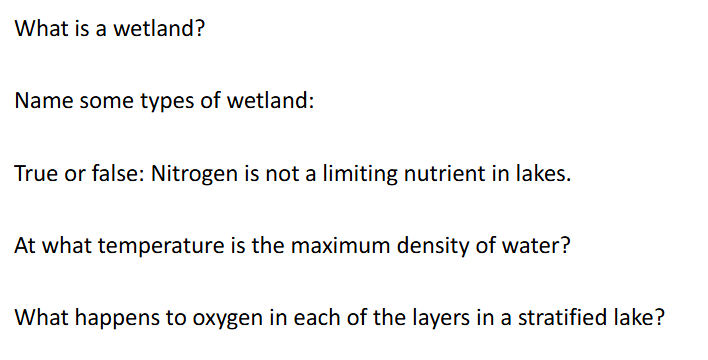
Quiz on lecture 4 topics
Macroinvertebrates are key indicator group
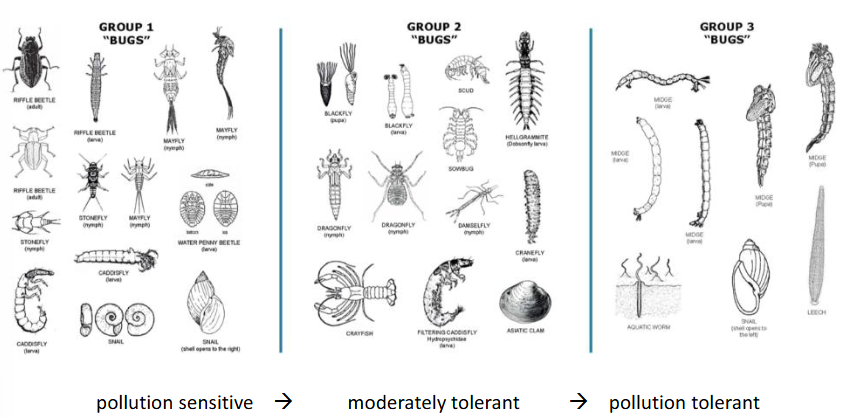
Chemical assessment of pollution demands intensive sampling:
to detect inputs, but also
to detect the extreme conditions which affect fish and other aquatic life
Now in a supporting role
Biological indicators
Organism(s) or attributes of the community which can be used to provide information on:
State of the environment
Change from ‘normal conditions’
Highlight the pressure causing a change
Advantages of macroinvertebrates in water quality assessment
Wide diversity and abundance
Relatively sedentary - occurrence of most can be related to conditions at place of capture.
Life cycle of 6 months or longer - provides overview of prevailing physical/chemical conditions
Sampling relatively easy and cheap; no ethics approval required
They respond to environmental stress
Disadvantages of macroinvertebrates in water quality assessment
Biological expertise needed to identify some groups
Knowledge of various groups needed as absences may be related to habitat or life cycle factors (e.g. seasonal emergence).
Mayfly nymph - Family Heptageniidae
Pollution-sensitive
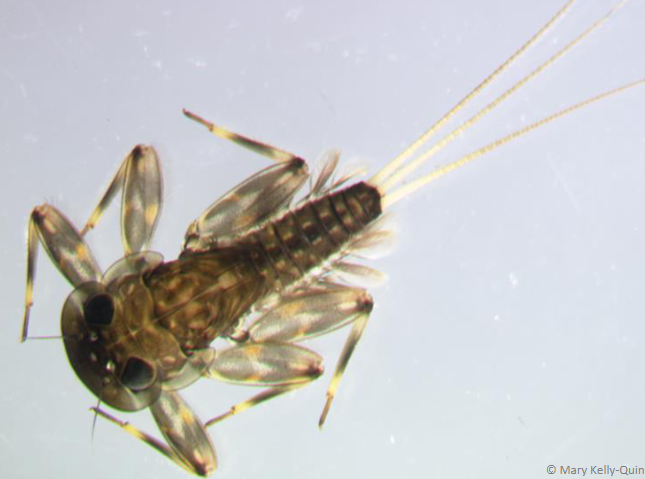
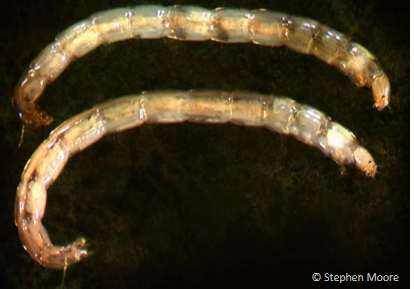
Chironomids are highly versatile species that can tolerate a very wide range of environmental stresses
Chironomid larvae (non-biting midges) - pollution tolerant
Type of fly
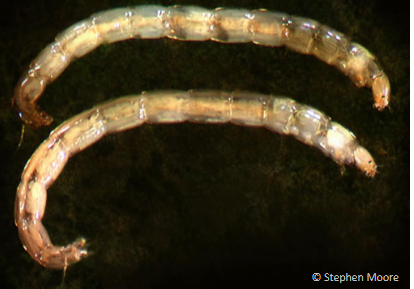
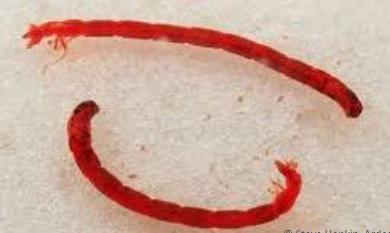
Chironomus sp. (bloodworm)
Tolerates low oxygen conditions associated with organic pollution
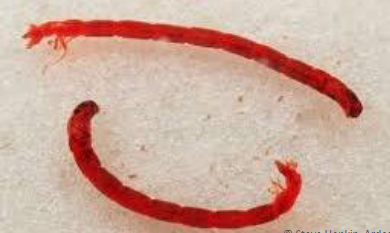
Macroinvertebrate communities found in:
Clean water → moderate pollution → heavily polluted water
Clean waters = support good variety and numbers of pollution-sensitive macroinvertebrate taxa PLUS some pollution-tolerant taxa
Polluted water = dominated by pollution-tolerant macroinvertebrate taxa
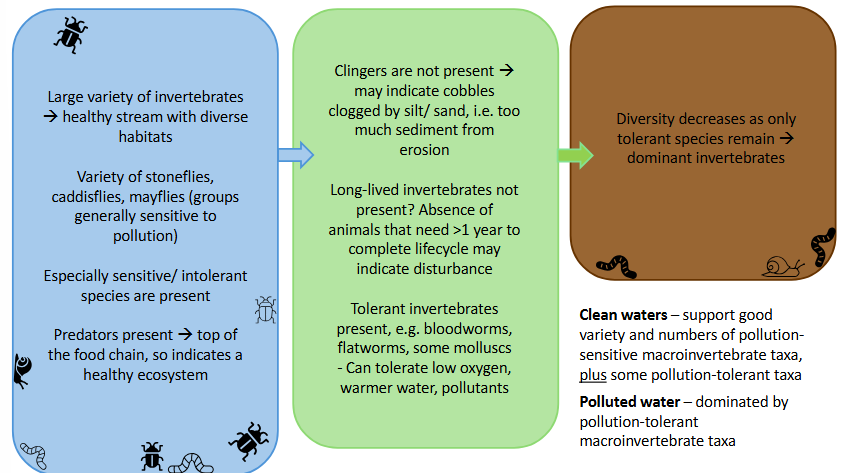
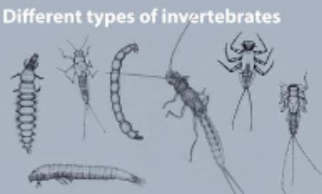
Different types of Invertebrates
A large variety of invertebrates indicates a generally healthy stream with diverse habitats.
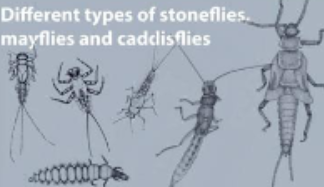
Different types of stoneflies, mayflies and caddisflies
As a whole, these groups of insects are sensitive to pollution, metals, low oxygen and warm water.
If a variety of stoneflies, mayflies and caddisflies are found, usually indicates that the stream is generally healthy and has diverse habitats.
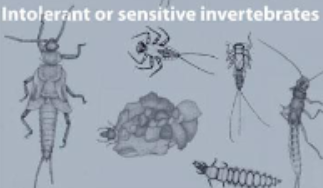
Intolerant or sensitive invertebrates
Some animals are especially sensitive and will be the first to disappear if there is some type of disturbance.
If intolerant or sensitive invertebrates are present, it usually indicates the stream is generally healthy and has diverse habitats
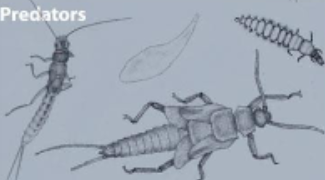
Predators
Predators are top of the food chain
If they are present, the stream has diverse habitats that support a variety of prey animals
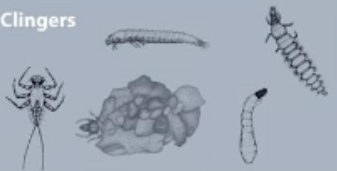
Clingers
Clingers attach themselves on and under cobbles and gravel where they feed.
When cobbles become clogged by sand and silt, these animals will not survive.
If clingers are not present, there may be too much sediment in the stream from erosion.
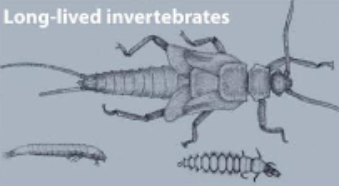
Long-lived invertebrates
Long-lived invertebrates require more than a year to complete their life cycles and if they are absent from a stream, it may indicate some type of disturbance.
Example, if the stream dries out at some point during the year, these animals may not survive.
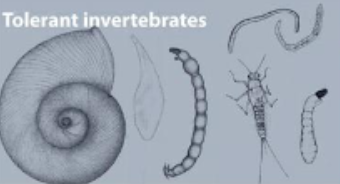
Tolerant invertebrates
Some invertebrates tolerate poor conditions such as polluted water, warm temperatures or degraded habitats.
As a stream becomes more disturbed, the number of tolerant invertebrates increases.
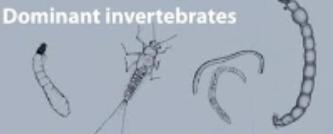
Dominant invertebrates
As stream health declines, a few groups will dominant the overall invertebrate numbers.
Water framework directive
Legal framework for the protection and management of water resources throughout the EU
Main objective:
To protect and maintain high and good status of all waters (where such status already exists) by 2015 and by 2027 latest
Prevent any deterioration in existing status of waters
Restore all waters that are impaired so that they achieve at least good status by 2015 and 2027 at latest
Why monitor?
The WFD calls for the protection and restoration of clean water across Europe
A key step in this process is for Member states to assess the health of their surface-waters through national monitoring programmes.

WFD Status Ratings
Principles for classification of high, good and moderate ecological status of a water body, based on anthropogenic alterations using Ecological Quality Ratios (EQR)
EPA Q-Values: Q1 to Q5
Q-value assigned depending on mix of pollution-sensitive vs pollution-tolerant

Fish as indicators
Advantages:
Good long-term (years) integrators
May include variety of species which cover several trophic levels - provide insight into potential impacts at multiple levels in food web
Disadvantages:
move - short and long distance movements
Life cycle can be complex
Fish assemblage structure reflects integrated environmental health
Environmental requirements for fish relatively well known
Top of the food chain - important to avoid contamination of human food chain
Difference between fish and invertebrate assessment methods
Fish sampling requires large spatial scale
Fish methods must apply to wide range of river/lake sizes
Fishes and invertebrates not necessarily equally sensitive to same stressors
Fish - WFD requirements
Species composition
Abundance
Age structure
Fish released alive where possible
Sub sample removed for lab analysis
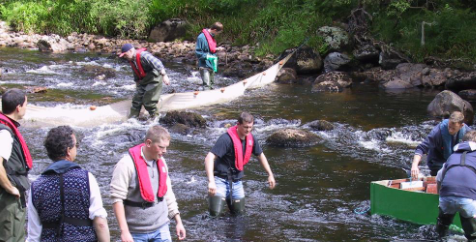
Rivers
Population estimation for salmon: Depletion method
Stretch of river 10 - 15x stream width
Stream section sampled repeatedly; fish captured are removed
→ each sampling pass should remove fewer fish
→ Total population can be estimated by extrapolating the decreasing number to 0
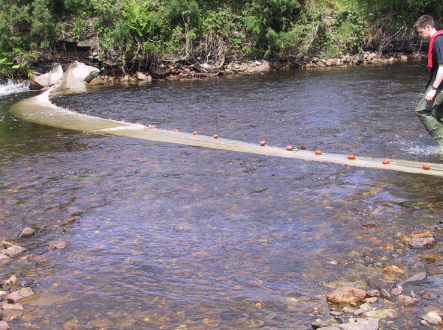
Lakes
Electofishing in shallow systems
Gill netting
Mark-recapture (recapture min 10% of marked fish)
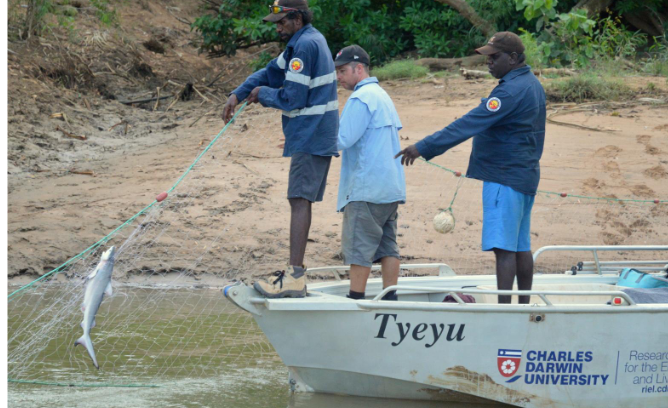
Key measurements
Species (stocked or wild)?
Length
Weight
Condition/evidence of disease
Scales for ageing
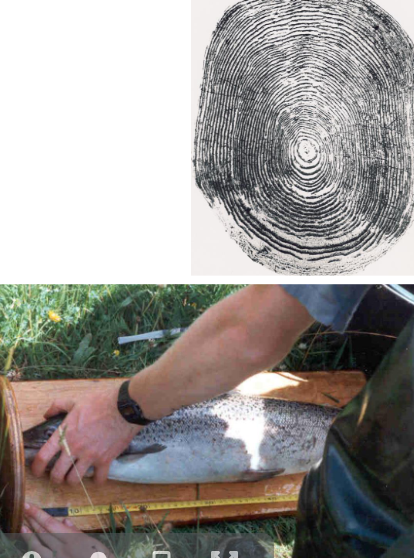
Ageing fish
Calcified structures, such as scales and bones used to determine age of fish
Scales are most widely used because they are easy to collect and store
Fish scales and bones grow bigger as the fish gets older, with new layers of growth deposited around the scale each year
Circuli - growth rings - gaps between them can be measured under magnification to determine growth rate.
Some fish species - scales difficult to age - otoliths (bones from inner ear) used instead
Otolith with rings for aging
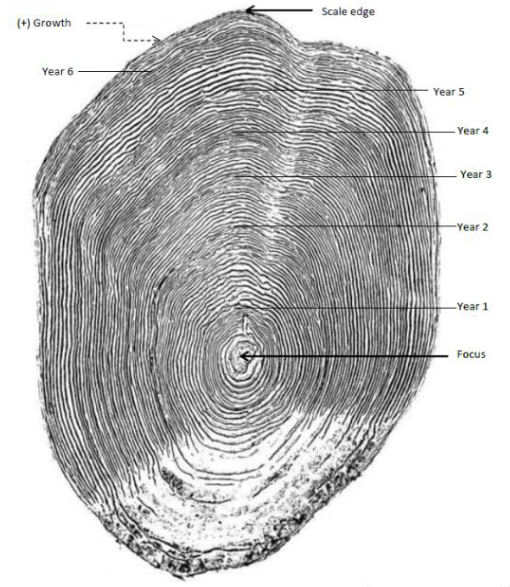
Important to distinguish natural variation from anthropogenic impact
Natural factors affecting distribution & community structure aquatic biota:
water chemistry
sources of organic matter - continuum concept
physical habitat
Adaptions to life in flowing water
Two key physical forces affecting aquatic biota:
Flow
Substrate (these are interlinked)
Biota adapt to avoid being swept downstream
Adaptions:
attachment structures
modified shape
behaviour
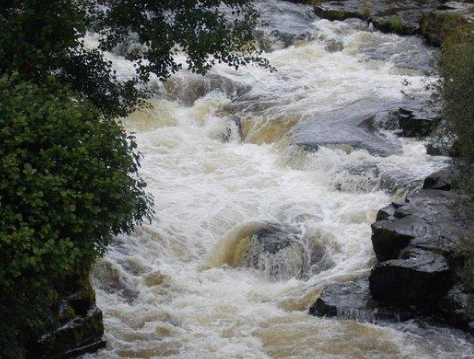
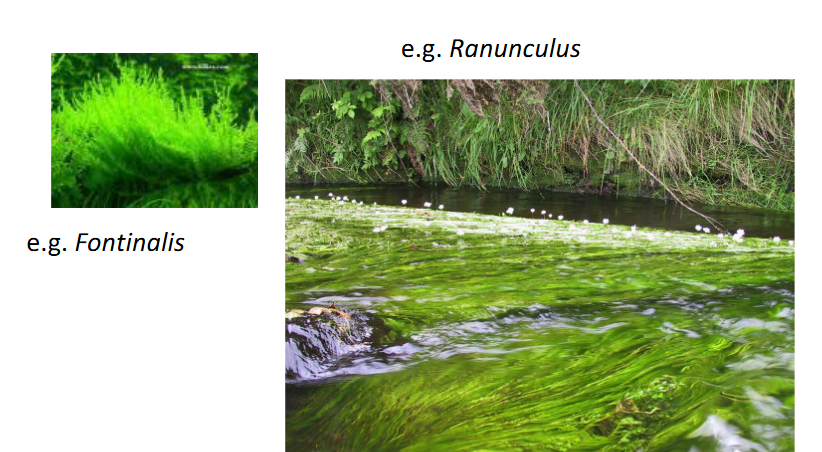
Attached mosses & macrophytes
Attachment mechanisms of macroinvertebrates and other aquatic biota

Flattened mayflies (Ephemeroptera)
Family Heptageniidae, Genus Rhithrogena
Flat, teardrop-shaped body - well suited to clinging to rocks in fast water where they feed on detritus and algae.
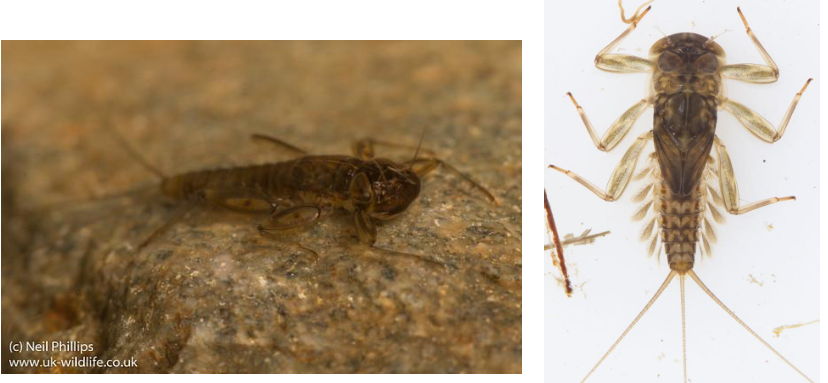
Attached & streamlined
Freshwater limpet - streamlined flattened conical shape of shell helps animal cling on in fast currents
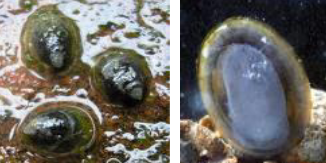
Clingers
Riffle beetles have large claws on the feet for holding on
Caddisfly larvae have hooks at the end of the abdomen
Streamlining
Body width needs to occupy less than 36% of the total body length
Mayflies (Ephemeroptera) and stoneflies (Plecoptera) living in turbulent water have long tails that act as fins to assist in streamlining and recovery if they become dislodged
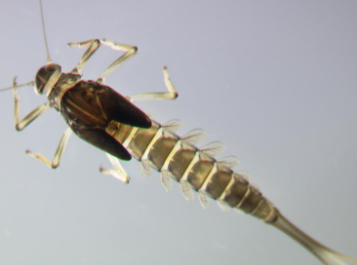
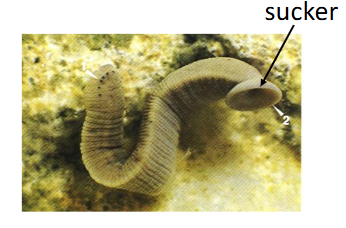
Suction
Leeches (sub-class Hirundinea) have 2 suckers, one on each end rear sucker used primarily for locomotion and to latch onto host when feeding
Black fly larvae (Simuliidae) have a suction pad that attaches them to the substrate.
If they are dislodged, they can spin out a safety line which catches the bottom - they then use their proleg to crawl back along it.
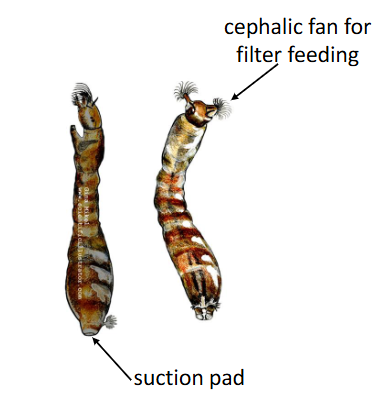
Burrowing
Midge larva (Diptera: Chironomidae) in its U-shaped burrow
Oligochaete worms (Oligochaeta: Tubificinae) feeding head-down in sediments
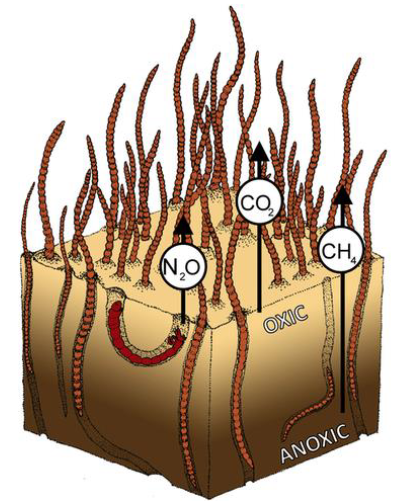
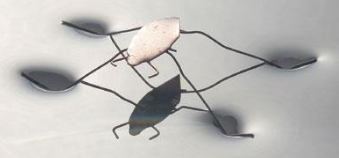
Surface Dwellers
Pond skaters use surface tension to walk on water
Fine hairs on the insect’s feet repel the water
The ends of its thin legs are angled sideways so they do not break through the film on the water’s surface
Whirligig beetles skate on the water surface because of their oar-liked hind legs
They can beat their hind legs 60 times per second, which propels them over the surface.
